Ditapis dengan
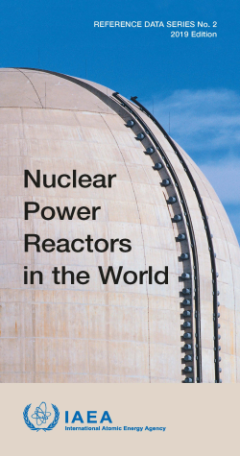
Nuclear Power Reactors in the World Edition 2019 - Reference Data Series No. 2
This is a collection of references about nuclear power reactors in the world 2019. Published by the IAEA in 2019. This document contains a lot of statistical data in the form of tables such as from construction to operation from various IAEA member countries. Final data is taken until 2018 (MM). Keyword: nuclear power reactor, IAEA, nuclear reactor
- Edisi
- -
- ISBN/ISSN
- 978-92-0-102719-1
- Deskripsi Fisik
- 80 Halaman
- Judul Seri
- -
- No. Panggil
- 621.483 IAE N

Laporan Hasil Kajian Tentang Ketentuan Sistem Proteksi Fisik Instalasi dan Ba…
- Edisi
- -
- ISBN/ISSN
- -
- Deskripsi Fisik
- 113 p. : illus. ; 30 cm
- Judul Seri
- Rekaman Unit Kerja
- No. Panggil
- 621.4835 BAP K
- Edisi
- -
- ISBN/ISSN
- -
- Deskripsi Fisik
- 113 p. : illus. ; 30 cm
- Judul Seri
- Rekaman Unit Kerja
- No. Panggil
- 621.4835 BAP K
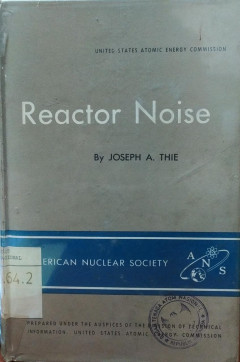
Reactor Noise
This monograph is one in a series developed through the joint efforts of the American Nuclear Society and The Division of Technical Information of the U.S. Atomic Energy Commission. The objective of this series is the publication of concise, authoritative treatises on selected subjects in nuclear science and technology, realizing a shorter writing and publication schedule together with a lower …
- Edisi
- -
- ISBN/ISSN
- -
- Deskripsi Fisik
- 262 p,; 23 cm.
- Judul Seri
- -
- No. Panggil
- 621.483 THI r
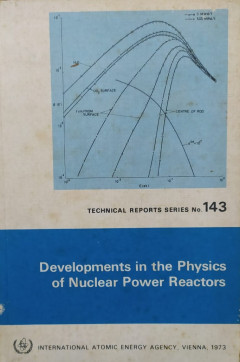
Developments in the Physics of Nuclear Power Reactors: Technical Reports Seri…
The reactor physicst must resist the tendency to become so immersed in day-to-day problems as to lose sight of the overall role of reactor physics. It is his responsibility to form an independent opinion of the overall requirements of a project with respect to reactor physics and to try to make sure they are met. The rest of this presentation gives a general picture of the areas in which rea…
- Edisi
- -
- ISBN/ISSN
- -
- Deskripsi Fisik
- 291 p., illus.; 24 cm.
- Judul Seri
- Technical Reports Series No. 143
- No. Panggil
- 621.483 IAE d
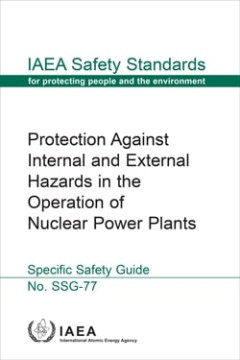
Protection Against Internal and External Hazards in the Operation of Nuclear …
This Safety Guide provides specific recommendations on protection against internal and external hazards in the operation of nuclear power plants. It provides new or updated recommendations derived from enhanced understanding of operational aspects of hazards and combinations of hazards. Operating experience gained from incidents and accidents in nuclear power plants around the world has demonst…
- Edisi
- -
- ISBN/ISSN
- 978–92–0–101522–8 (pdf)
- Deskripsi Fisik
- 83 p
- Judul Seri
- IAEA safety standards series
- No. Panggil
- 621.039.58 IAE p
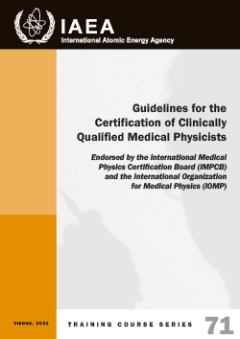
Guidelines for the Certification of Clinically Qualified Medical Physicists -…
Physicists work in many health-related areas, such as: clinical settings, academia (teaching and research), industry (technology development and servicing), national and local government regulatory agencies, accreditation agencies, laboratories (calibration and dosimetry laboratories), and standards’ organizations. Clinically qualified medical physicists (CQMPs) are professionals working i…
- Edisi
- -
- ISBN/ISSN
- -
- Deskripsi Fisik
- 44 pages, 1.4 MB
- Judul Seri
- -
- No. Panggil
- -
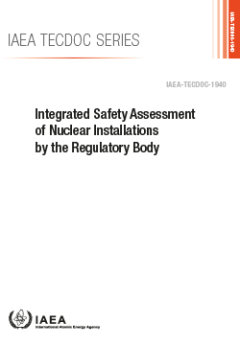
Integrated Safety Assessment of Nuclear Installations by the Regulatory Body …
The effectiveness of nuclear regulatory systems is enhanced by portraying transparency and openness in communicating all matters relating to safety to the public and stakeholders. This plays an important role in maintaining and enhancing public confidence on the safe use of nuclear energy for socioeconomic development. The regulatory body, in presenting the comprehensive safety status of nuclea…
- Edisi
- -
- ISBN/ISSN
- 978-92-0-133521-0
- Deskripsi Fisik
- 70 Pages, 199 MB
- Judul Seri
- -
- No. Panggil
- 621.483 IAE
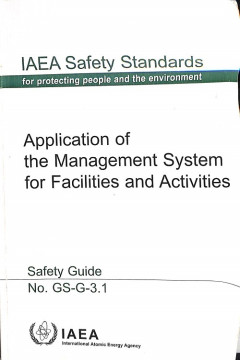
Application of the Management System for Facilities and Activities, Safety Guide
This publication provides guidance for following the requirements for management systems that integrate safety, health, security, quality assurance and environmental objectives. A successful management system ensures that nuclear safety matters are not dealt with in isolation but are considered within the context of all these objectives. The aim of this publication is to assist Member States to…
- Edisi
- -
- ISBN/ISSN
- -
- Deskripsi Fisik
- 105 p. : Illus. ; 24 cm
- Judul Seri
- Safety Standards Series No. GS-G-3.1
- No. Panggil
- 633.10486IAE A
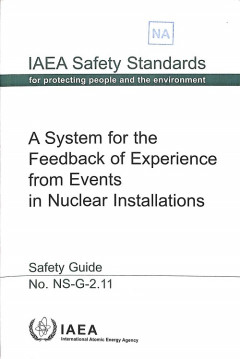
A System for the Feedback of Experience from Events in Nuclear Installations
This Safety Guide provides recommendations on all the main components of operating experience feedback systems, utilizing relevant information on events and abnormal conditions that have occurred at nuclear installations around the world. It focuses on the interaction between the different systems for using operating experience feedback and constitutes an update and an extension of Part I: A Na…
- Edisi
- -
- ISBN/ISSN
- 9201014066 / 1020525X
- Deskripsi Fisik
- 61 p. : Illus. ; 24 cm
- Judul Seri
- Safety Standards Series No. NS-G-2.11
- No. Panggil
- 621.483 IAE A
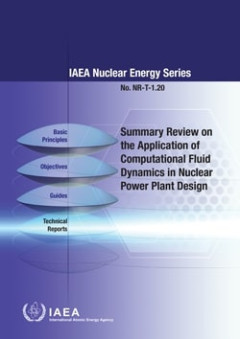
Summary Review on the Application of Computational Fluid Dynamics in Nuclear …
The IAEA’s statutory role is to “seek to accelerate and enlarge the contribution of atomic energy to peace, health and prosperity throughout the world”. Among other functions, the IAEA is authorized to “foster the exchange of scientific and technical information on peaceful uses of atomic energy”. One way this is achieved is through a range of technical publications including the IAEA…
- Edisi
- -
- ISBN/ISSN
- 978–92–0–100321–8
- Deskripsi Fisik
- 80 p
- Judul Seri
- IAEA nuclear energy series
- No. Panggil
- 621.039.5:532 IAE s
 Karya Umum
Karya Umum  Filsafat
Filsafat  Agama
Agama  Ilmu-ilmu Sosial
Ilmu-ilmu Sosial  Bahasa
Bahasa  Ilmu-ilmu Murni
Ilmu-ilmu Murni  Ilmu-ilmu Terapan
Ilmu-ilmu Terapan  Kesenian, Hiburan, dan Olahraga
Kesenian, Hiburan, dan Olahraga  Kesusastraan
Kesusastraan  Geografi dan Sejarah
Geografi dan Sejarah